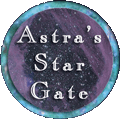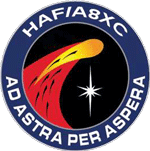
Near Earth Asteroids



In December 2008, seven U.S. government agencies met to discuss Near Earth Asteroids and develop plans for dealing with dangerous NEAs. The asteroid Apophis was still thought to be a major threat to the planet. Teams of government experts worked on developing a protection plan.
The Future Concepts and Transformation Division (AF/A8XC) hosted a Natural Impact Event Interagency Planning Exercise in December of 2008. A one day exercise to explore the US government's response to an threatening asteroid impact. This included 27 subject matter experts from U.S. government agencies including the Department of State, Department of defense, Department of Energy, Homeland Security, National Aeronautics and Space Administration, and the National Security Council.

The scenario involved a hypothethical asteroid, 2008 Innoculatus. Created with characteristics similar to Apophis, it was a binary asteroid consisting of a 270m rocky rubble pile projected to strike the Gulf of Guinea and a 50m metallic companion asteroid projected to strike in the National Capital Region (NCR). The scenario presented multiple threats by size variation, asteroids composition, and projected strikes involved land mass and water impacts, intended to include both national and international notification, and provide pre-planning sin case the asteroid Apophis was truly a threat to the Earth.
The experts were divided into two teams. One team had to react to an asteroid that was discovered 72 hours from impact. They focused on disaster response . Team two had seven years to prepare for the impending strike. This team focused on deflection and mitigation. They had to to design a deflection plan using existing capabilities.
From the inter-agency report: An overall Earth protection system must have three components. First, a search system is needed to identify any potential NEO impactors. Second, a series of detailed investigation missions are needed to understand the structure, composition, rotational state, and other physical properties of potential impactors. And finally, deflection technologies are needed to change the speed of a NEO to ensure that it will not impact Earth.
More details on the report and the download site for the full document can be found at Natural Impact Hazard Interagency Deliberate Planning Exercise After Action Report - December 2008
In this report, Near Earth Objects (NEOs) include any small body passing within 1.3 Astronomical units (AU) of the Sun, that includes both Near Earth Asteroids (NEAs) and Near Earth Comets (NECs). At the time of the meeting, there were 5,032 known NEOs. A smaller subset of these, approximately 20% are considered Potentially Hazardous Objects (PHOs), currently defined as any small body with a potential of impacting the Earth at some point in the future. NASA does have an existing contingency procedure (in the form of a draft contingency plan) to deal with a possible impact and internal and external notification.
This page was created by Dawn Jenkins, September 7, 2013.